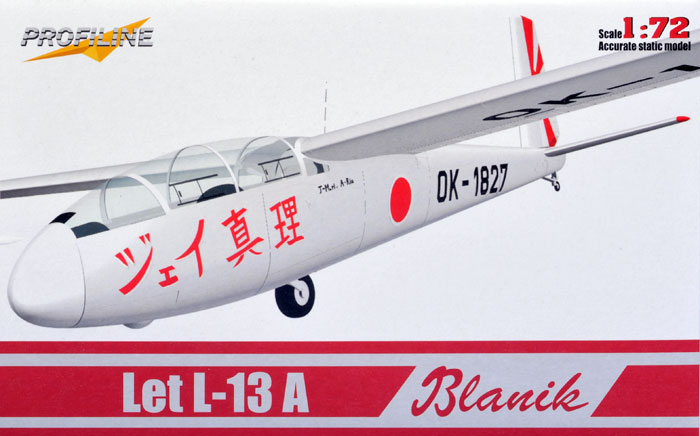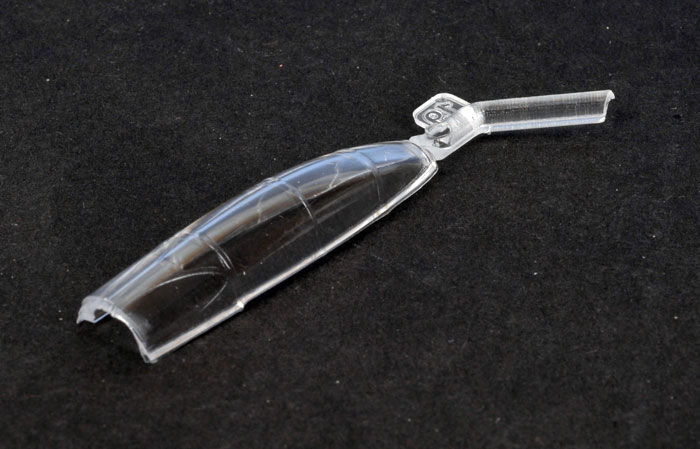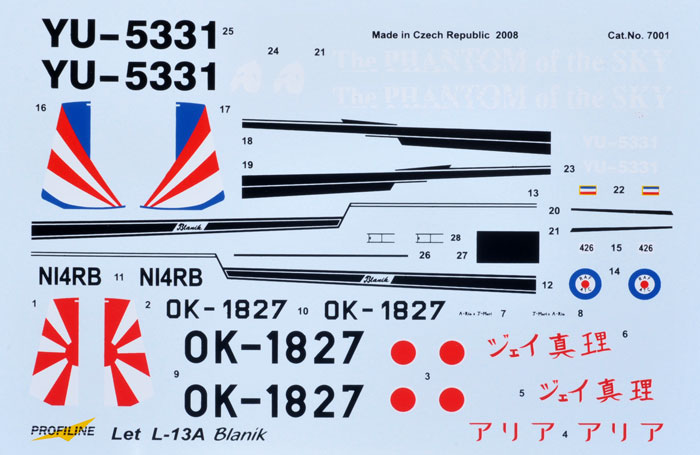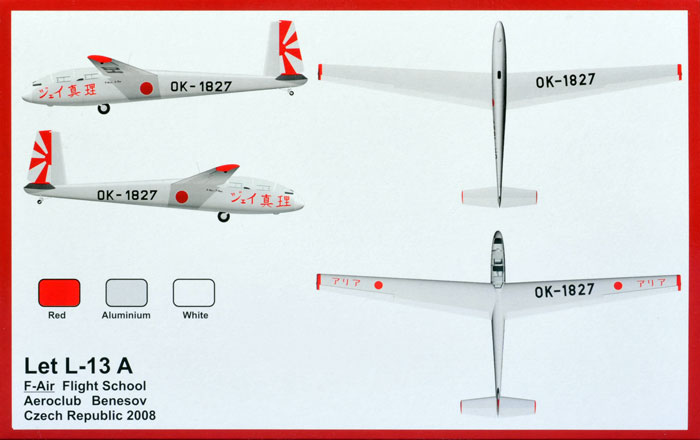Let Le-13 Blanik

Profiline, 1/72 scale
S u m m a r y : |
Catalogue Number: |
Profiline kit number 7001 - Let L-13 Blanik |
Scale: |
1/72 |
Contents & Media |
23 x grey and 1 x clear styrene; decals for three subjects |
Price: |
Available online from CMKEShop €12.00 and Aviation Megastore €12.95 |
Review Type: |
First Look |
Advantages: |
Simple to build with very well moulded parts and nice detail. |
Disadvantages: |
None worth mentioning. |
Conclusion: |
A very nice kit of an interesting and attractive subject. |
Reviewed by Mark J. Davies

HyperScale is proudly supported by Squadron.com
The L-13 Blaník is a two-seat trainer glider produced by Let Kunovice. It went into production in 1958, proving to be easy to fly, rugged and inexpensive. It is the most numerous and widely used glider in the world, with 2650 examples being produced, or 3,000 if variants are included. It is still widely used throughout the world.
I have not previously heard of Profiline, but this kit indicates real promise, as it is typical of the better quality limited run Czech kits. At this stage they have offered two boxings of their Blaník kit.
1/72 sport gliders must be a fairly limited market, so it seemed surprising Profiline’s first kit is of a subject already kitted twice in the Czech Republic by Czech Master Resin and AZ Models (although later on I was to find why this subject was chosen). I had finished writing this First Look review but still wished to know more about Profiline. So I emailed Stepan Stransky, the owner. After about a week I had a reply from a friend of his who could reply in English. I have provided some background on the company as an addendum to this review article.
This kit consists of a well moulded sprue with a nice gloss finish to the 23 plastic parts.
The parts look to be from a metal mould, with finer standards of moulding on details parts and smaller sprue gates than some limited run kits. There is the tiniest hint of flash along some leading edges, but could be dealt with very easily. Surface detail on the airframe consists of very fine recessed lines, and small detail parts like seats, control columns, and minute tail wheel are commendably crisp.
The clear on-piece styrene canopy comes from a well polished mould and is nice and clear, albeit just thick enough to possibly distort the view of the cockpit. However there are many modellers who will prefer this to an acetate vac-from canopy. Also, there is a constructional advantage to having a styrene canopy given the way the forward part of the wing-roots align and fix with part of the canopy.

Decals for three very attractive schemes are provided. One is for an RAF Air Training Corps machine (I was interested to see “RAF ATC” appears within the white of the national roundel). The other two schemes are civilian: One is for a very colourful Japanese machine featured on the box art. The other is a Yugoslavian machine with aluminium wings and gloss black fuselage, all along which is the name “Phantom of the Sky” in white plus a white ghost on the fin. The decals look to be well registered with good colour density.

The aircraft history is in Czech and English, as are the instructions. The instruction sheet lacks a parts map, but it doesn’t really need one. The assembly diagram is concise and quite adequate for the task. However there are two points that caused me a little confusion. The diagram illustrating wing and tailplane dihedral has the smaller of the two angles shown as 5º for the tail and the larger angle as 3º for the wings which of course seems contradictory. Fortunately the diagrams are accompanied by words that say wings 5º and tail assembly 3º, and so this clarifies things. There are no interior colour call-outs.
The instructions also indicate a choice of wing tips, one with a small wheel and the other more of an elongated teardrop shape. The paintings and markings diagrams show all three options with the teardrop. However as sometimes the same outline image is used in artwork I wanted to be sure I got the right tips for the “Phantom of the Sky” option I plan to build. The only photos I Googled perversely did not show the wing tips of this aircraft. So, without revealing I was reviewing their kit, I emailed Profiline and asked which tip to use. I had an answer overnight (in English) along with a stash of really nice images attached of the aircraft I wished to model - Now you can’t get better customer service than that!
The package is rounded with the parts enclosed in a cellophane bag within an attractively printed end-opening box. As an aside, pictures on the side of clearly suggest this kit was mastered using CAD technology, something I haven’t struck with small limited run kits before.

I have no hesitation in recommending this kit to glider fans, or anyone who wants an attractive and different subject in their collection.
Thanks to Profiline for this review sample.
Addendum
Stepan Stransky of Profiline is a full time master modeller who has been producing patterns professionally since the early 1990s. He’s created many patterns for CMK resin accessories, and also some full resin models sold as part of CMK’s Planet Models line. From time to time he’s produced models under his own label of Professional Model; these include a 1:48 Vought XF5U Flying Pancake, Letov S-328, and Pilatus PC-6. He has also produced patterns for a large number of armour resin models in 1/87 scale for various brands.
About two years ago Stepan decided to produce his own plastic models. He sought the advice of friends within the Czech modelling industry regarding the technology he should use. Stepan settled on using full CAD-CAM workflow for producing moulds using CAD modelling software and a 3D CNC milling machine. First he tried to create some parts for resin update sets and then started to prepare his first moulds after obtaining a moulding machine.
As the mould was to be milled directly to metal as he chose something quite simple for his first kit. The L-13 Blanik’s simple and clean lines made it an ideal subject. The whole process from first CAD drawing to finished product was about 4 weeks. The model is based on drawings published in L+K Magazine and Stepan’s own measurements of the actual glider. Profiline’s Blanik is a cut above “classic” short run kits from resin moulds because of its metal moulds produced in a one step process on a CNC mill.
Stepan’s business main business will remain producing pattern masters. From time to time he will surprise us with a model. Although I don’t know what it is, I was advised that Profiline’s next kit will be better then Blanik and will have a wide appeal to modellers – Watch this space!
Review Text Copyright © 2009 by Mark Davies
Page Created 8 December, 2009
Last updated
8 January, 2009
Back to HyperScale Main Page
Back to Reviews Page |
Home
| What's New |
Features |
Gallery |
Reviews |
Reference |
Forum |
Search